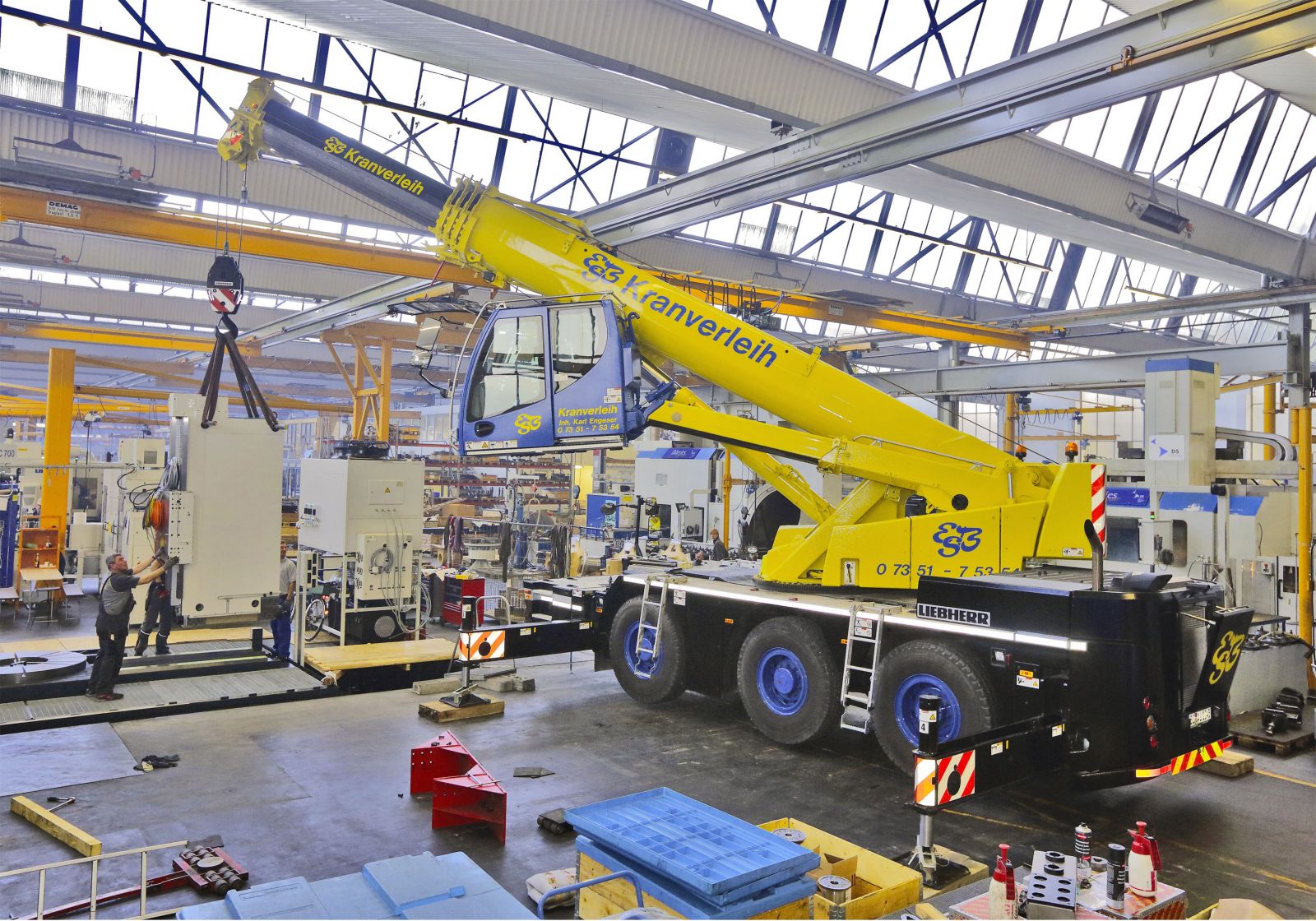
Both crane manufacturers and rental companies are working towards minimizing the carbon footprint of the whole industry on the environment. In this three-part article, we explain different efforts being made to decrease the adverse impact.
The Liebherr Pactronic System
To reduce negative impacts on the environment, manufacturer Liebherr has produced the Liebherr Pactronic System, a hybrid drive system that boosts primary power using a secondary source. The name Pactronic comes from Power by Accumulator and Electronics. Instead of increasing the primary power, boosting power is achieved by adding a secondary energy source to the system, or an additional energy storage device (accumulator). The accumulator is charged by using reverse power while lowering a load and by the surplus power of diesel engine. The energy, which is stored in the compressed gas, can be released upon demand and provides additional power for the drive system. As a result, the total hoisting power is the sum of the conventional hydrostatic power and the secondary energy, which is provided by the accumulator.
“In order to reach an optimal efficiency, a hydraulic motor is directly coupled to the hoisting winch. In this way, an enormous power boost is possible and both hoisting, as well as lowering, speeds are increased significantly without an increase in primary power,” explains Wolfgang Pfister, LWN.
“When comparing the Pactronic drive system with a conventional Liebherr mobile harbor crane with identical prime mover (diesel or electric engine) installed, hoisting power is doubled, resulting in an increased hoisting and lowering with up to 100% higher speeds,” Pfister adds. “With a focus on turnover (tons/hour), the end user benefits from an increase in performance of 30% on average depending on the crane’s operation mode.”
Factory settings
Crane manufacturers are also reducing environmental impacts during the production phase. Typical examples are less waste in manufacturing and products with lower engine emissions. Crane manufacturer Liebherr, for example, has enforced strict policies at its Liebherr-Werk Nenzing factory, which is in a protected area in Nenzing, Austria. Tobias Froehlich, Liebherr-Werk Nenzing strategic marketing and communications, explains that as a result of its location, the site has to meet high environmental standards. To help protect the surrounding area, water-based paint and natural gas are used in the production process. In addition, the production of crawler crane boom sections is automated and work is carried out at the center of the factory to reduce the transport route from 2.2 to .25 miles.
Similar energy-saving policies are in place at Liebherr-Werk Biberach in Germany where power is generated by solar panels that cover approximately 320,000 square feet on the factory roof. “Every year the system generates close on 2.6 million kWh of electricity and results in Carbon dioxide savings of approximately 2,750 tons per year,” explains Daniela Schoene, Liebherr-Werk Biberach.
Crane manufacturer Tadano is also reducing energy consumption through the installation of solar panels. The roof of its Shido plant in Kagawa Prefecture, Japan, has been installed with 21,500 square feet of solar panels. According to Tadano’s latest figures, in 2010 the panels produced 255,740 kWh of energy. Tadano Faun in Germany is also ISO14001 certified and the company uses water-based paint for primer coats during production.
Reducing carbon dioxide emissions is a well-known topic of discussion for crane manufacturers. Palfinger is actively reducing the company’s carbon dioxide emissions, as a company spokesperson explains, “We follow guidelines to guarantee energy efficiency, waste reduction, safe disposal and compliance with environmental provisions into local management. Some of our sites, such as Lengau and Köstendorf in Austria already have certified environmental management systems in place. Caxias do Sul in Brazil and Tenevo in Bulgaria are already preparing for the introduction of such systems.” The company also uses solvent-free paints during the production process.
Also actively reducing its carbon dioxide emissions is Cargotec. In 2012 Cargotec’s greenhouse gas emissions totaled approximately 43,000 carbon dioxide equivalent tons and the total amount of waste was approximately 12,900 tons, most of which was recyclable. To meet these levels, the company has a policy that focuses on reducing energy consumption. In addition, most of Cargotec's Hiab crane factories have been certified to ISO 14001, an environmental standard which helps companies reduce waste management and minimize consumption of energy and materials through the use of an environmental management system.
To minimize waste and energy consumption crane manufacturer Kobelco has fewer production lines and more automatic processing machines at its factories. It also imposes a strict inspection policy on all its products before shipment to prevent pollution. A company spokesperson explains, “We examine all chemical substances contained in the parts of typical models among those specified for European market, to verify that our machines do not contain toxic substances exceeding the levels defined by the strict European REACH standard. Registration, Evaluation, Authorization and Restriction of Chemicals (REACH) is a European Union regulation governing all range of products, and is the most strict regulation of its kind today.”
Author: Laura Hatton, KHL Group
Source: KHL Group